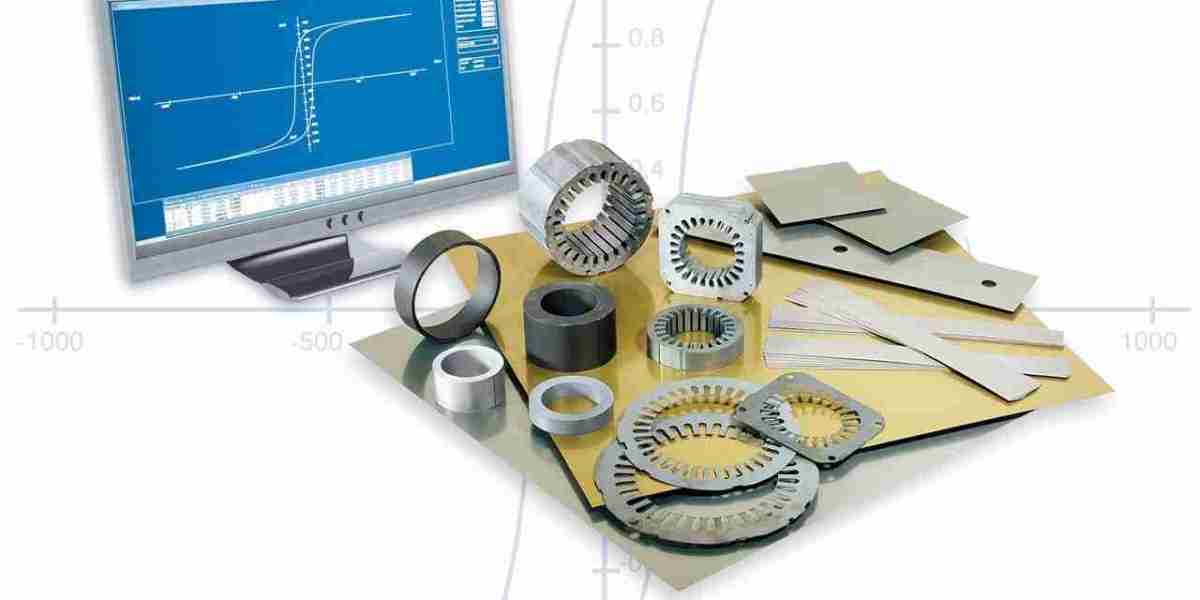At the heart of modern energy and electronics systems lies the continuous pursuit of greater efficiency—and the Soft Magnetic Material Market is responding with breakthrough innovations aimed at optimizing magnetization dynamics and minimizing core losses. These advancements are revolutionizing how soft magnetic materials function in transformers, inductors, motors, and sensors. By reducing hysteresis and eddy current losses, next-generation materials are enabling higher energy efficiency, smaller device footprints, and improved thermal stability in a range of high-frequency applications.
The Importance of Magnetization Efficiency
Magnetization efficiency refers to how effectively a material aligns its magnetic domains in response to an applied field. High-efficiency magnetization is critical for reducing energy consumption and improving the responsiveness of electromagnetic devices. In soft magnetic materials, this property ensures rapid switching and low coercivity, both essential for high-speed, high-frequency environments.
Advanced applications—such as electric vehicle powertrains, inverter-based renewable systems, and AI-controlled industrial drives—rely on magnetic materials that can magnetize and demagnetize repeatedly with minimal energy input. Poor efficiency not only increases power consumption but also generates excess heat, which shortens component lifespan and affects system reliability.
Materials engineered for optimized domain wall movement and lower anisotropy are now being developed to enhance magnetization behavior across a broader temperature and frequency range.
Innovations in Loss Minimization
Core loss in soft magnetic materials occurs primarily through two mechanisms: hysteresis loss (from repeated magnetic cycling) and eddy current loss (caused by induced currents). Reducing these losses directly improves device performance and power savings.
To minimize hysteresis losses, manufacturers are formulating new amorphous and nanocrystalline alloys with fine grain structures and low coercivity. These materials exhibit nearly rectangular hysteresis loops, allowing them to switch polarity with minimal energy input. For eddy current loss mitigation, ultra-thin laminations and high-resistivity materials are being developed to restrict current paths within the core.
Laser-scribing and nano-scale coating techniques are being used to introduce controlled domain refinements and insulation barriers between magnetic grains, further reducing losses at high operating frequencies.
Role of Advanced Materials
Recent developments in nanocrystalline materials have proven to be a game-changer. These materials—formed by rapid solidification and heat treatment—offer superior magnetic permeability and reduced loss profiles, especially in the 20 kHz to 100 kHz frequency range. Their applications span EV chargers, solar inverters, and industrial automation systems.
Amorphous metal alloys, typically based on iron, cobalt, or nickel, are also leading candidates for low-loss transformers and EMI filters. Their disordered atomic structure disrupts eddy currents and allows thinner material layers, enabling compact, lightweight designs.
Silicon steel remains widely used in traditional power systems, but new iterations are being engineered with higher silicon content and grain orientation control for better magnetic behavior and reduced aging effects.
Coatings, Laminations, and Thermal Improvements
Thermal performance is a critical factor when optimizing soft magnetic materials. Excessive heat from magnetic losses can degrade insulation, shift magnetic properties, and damage adjacent components. To counteract this, new insulating coatings and laminated designs are being implemented to improve thermal management.
Thin epoxy, polymer, and ceramic coatings serve dual purposes—offering electrical insulation and thermal conduction. Meanwhile, laminated magnetic stacks help reduce eddy currents while enhancing heat dissipation pathways.
Some manufacturers are also incorporating thermally conductive resins and metal matrix composites into core assemblies, enabling better integration with heat sinks and cooling systems in high-power devices like EV drivetrains and industrial UPS units.
Digital Design and Simulation Tools
The evolution of material science in magnetics is closely tied to improvements in simulation and testing capabilities. Finite Element Analysis (FEA) software allows engineers to simulate magnetic behavior under varying loads, frequencies, and environmental conditions—reducing trial-and-error in material selection and component design.
Magnetic hysteresis modeling, thermal simulation, and 3D magnetic flux visualization help identify performance bottlenecks and guide material optimization. These tools are especially valuable in sectors where regulatory compliance and reliability are paramount, such as aerospace, healthcare, and renewable energy.
AI-based modeling is also emerging, using machine learning algorithms to predict material behavior and suggest new alloy compositions based on desired performance outcomes.
Industry-Wide Benefits and Competitive Differentiation
For component manufacturers and OEMs, using low-loss, high-efficiency magnetic materials offers a strong competitive edge. Devices run cooler, last longer, and comply more easily with energy efficiency and safety standards like Energy Star, IEC 60076, and RoHS.
Lower operating temperatures also enable denser packaging of electronics, supporting the trend toward miniaturization and integration. As devices become more compact and multifunctional, optimized magnetics will be essential for maintaining performance without compromising safety or compliance.
These benefits translate into real-world savings in energy consumption, maintenance costs, and device downtime—making them particularly valuable in commercial, industrial, and infrastructure applications.
Collaborations, Research, and Material Pipeline
To stay at the forefront of material innovation, leading manufacturers are collaborating with academic institutions, national laboratories, and specialty alloy producers. These partnerships focus on alloy development, magnetic domain engineering, and performance benchmarking across a range of applications.
Materials like cobalt-iron alloys, soft ferrites with custom doping, and even bio-compatible magnetic composites are under research for next-generation use cases. Additionally, material recyclability and eco-design principles are being incorporated into R&D to align with circular economy and ESG mandates.
With demand surging in e-mobility, smart grids, and consumer electronics, the pipeline for new magnetic materials is robust and rapidly expanding.
Looking Ahead: Toward Ultra-Low-Loss and Adaptive Materials
The future of soft magnetics lies in ultra-low-loss materials that adapt in real time to electrical load conditions. Research is progressing toward magneto-electric and magneto-optic hybrids that combine traditional magnetic behavior with active feedback for precision applications.
In the next article, we will analyze how the Soft Magnetic Material Market Insights Show Rising Use in Powertrain and Traction Motors, spotlighting the essential role these materials play in the electrification of transportation.




